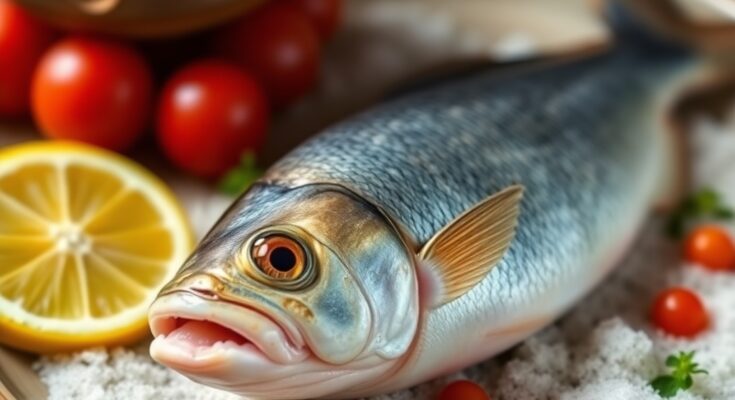Fish food recipe are great companions for any home but the type of food they consume greatly affects their liveliness. This way, they give them the right feeds they need and do it at their own convenience while having to spend little money. Your aquatic friends also require a balanced and nutrient based meal plan; this guide will ensure you learn how to make balanced and nutrient based meals for your fishes.
Why Make Your Own Fish Food Recipe?
You know, commercial fish food has preservatives and filler material added to it most of the times imaginable. Making your fish food at home gives you the confidence in knowing that your fish is getting the best food there is in the market.
Benefits of Homemade Fish Food Recipe
- Cost-Effective: Economical, owing to the fact that the products do not have to be purchased from expensive commercial brands.
- Customizable: These ingredients and following recipe may be slightly altered to better suit the needs of the fish.
- Fresh Ingredients: Deliver the highest quality but with no artificial preservatives or other ingredients.
Essential Ingredients for Fish Food Recipe
Coming up with fish food begins with learning the fundamental ingredients which are required by fish for instance; protein, vitamins, fiber among others.
Protein Sources
- Fish or Shrimp: It is a source of vital amino acids.
- Egg Yolks: An inexpensive source of protein that has many nutrients.
- Insects or Worms: A natural protein candidate for predatory fish.
Vegetable Additions
- Spinach or Kale: Packed with vitamins A and C.
- Peas: Relieve digestive problems, and contribute to the diet’s fiber content.
- Seaweed: Perfect for herbivoresDraft for carnivores: Their teeth are sharp and strong to be able to chew their meals Applicants carnivorous herbivorous animals: Their teeth are sharp and strong to be able to chew their meals Ideal for herbivorous species.
Carbohydrate Sources
- Rice or Oats: Adds energy to the diet.
- Potatoes: A low selection, at least for some fishes, which are associated with starchy foods.
Binders and Supplements
- Gelatin: It aids in shaping the food to pellets.
- Fish Oil: Contains the necessary Omega-3 fatty acids.
- Multivitamins: Increase global Wellness and resistive powers.
How to Make Fish Food at Home
Here is how you can come up with appropriate Meals for fish;.
Step 1: Gather Ingredients
- 1 cup cooked fish or shrimp
- ½ cup cooked vegetables (spinach, carrots and pieces).
- ½ cup cooked rice or oats
- 1 tablespoon fish oil
- 1 packet unflavored gelatin
Step 2: Blend Ingredients
Blend the cooked proteins, vegetables as well as carbohydrates. Stir until you get a smooth paste.
Step 3: Add Supplements and Binders
And combine this with fish oil and multivitamins. Hydrocolloids should be dissolved in hot water and the gelatin should then be added to the blend.
Step 4: Shape and Freeze
Pour the mixture into a tray and level it down. That it has to be frozen until it hardens then be cut into small pieces.
Step 5: Serve to Your Fish
Give your fish small portions of food, so that it gulps down the food within a few minutes to avoid foul water.

Storage Tips for Homemade Fish Food
This way the food remains fresh and suitable for your fish for consumption.
- Refrigerate: Storing them in an airtight container should help you consume the portions within one week.
- Freeze: For other foods, store the larger lots in the freezer for up to six months.
- Avoid Moisture: Store food in sealed bags or airtight containers in order to reduce bacterial formation.
Adjusting Recipes for Different Fish Species
All types of fish require different types of diets. Change the quantities in the recipe according to what they like.
Carnivorous Fish food recipe
- That, to increase protein content with insects or fish, needs some method to be applied.
- Reduce carbohydrate intake but try as much as possible to select natural foods.
Herbivorous Fish food recipe
- Include more dark green vegetables, spinach, kale, chard and sea vegetables.
- Limit proteins in order to minimize incidences of digestion problems.
Omnivorous Fish food recipe
- Make sure protein and vegetables are equal on the plate to achieve a balanced meal.
- Only incorporate a small serving of grains in the diet plan due to the energy they provide.
Common Mistakes to Avoid
Therefore, to only have the best fish food that is essential for your fish, avoid the following errors.
- Overfeeding: Pour only as much food as he or she can eat within a few minutes.
- Unbalanced Ingredients: Do not take much protein or carbs during your meal time.
- Using Raw Meat: Alway prepare proteins in order not to take bacteria.
Conclusion
Preparing your own fish food is very advantageous and trees your pets in the best way possible. Customization might seem almost effortless when it comes to using basic components to prepare food that suits their needs. Joyful fish therefore make joyful aquariums!
FAQs
1. Can I use raw vegetables in fish food?
Yes, but when boiled makes it easier for your fish to digest those vitamins or nutrients that are contained in foods.
2. How often should I feed homemade fish food?
Offer small portions of food 1 – 2 times in a day.
3. Is gelatin necessary for the recipe?
Yes it holds the ingredients together and makes it easier to handle the food stuff.
4. Can homemade fish food work for all fish types?
Thus with modifications it may suit herbivores, carnivores as well as omnivores.
5. What if my fish don’t eat the food?
It would help to recommend changing their diet to include certain foods they love; perhaps certain proteins or vegetables.

